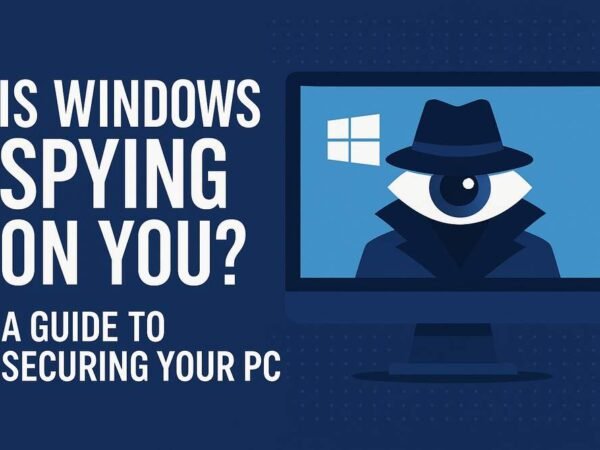In today’s digital age, small businesses are prime targets for cyber attacks. Unlike large corporations, smaller companies often lack the resources and cybersecurity infrastructure needed to fend off cyber threats. Hackers exploit these vulnerabilities, causing financial damage, stealing sensitive information, and even crippling operations. However, small businesses can adopt various strategies to safeguard themselves. By understanding the types of attacks and implementing Preventative business measures, companies can protect their assets and reduce risks.
1. Understand the Cyber Threat Landscape
Cyber threats come in many forms, and understanding these is the first step toward defence. Common cyber threats include:
- Phishing Attacks: Hackers trick employees into providing sensitive information through fake emails or websites.
- Ransomware: Malicious software locks users out of their systems until a ransom is paid.
- DDoS Attacks: Distributed Denial-of-Service (DDoS) attacks overwhelm a business’s online services, rendering them unavailable.
- Insider Threats: Sometimes, employees—whether intentionally or accidentally—cause security breaches by mishandling sensitive data.
By staying informed about the different types of attacks, businesses can recognize vulnerabilities and take proactive steps to mitigate them.
2. Invest in Robust Security Software
Security software is essential for protecting small businesses from cyber attacks. A multi-layered security solution, including firewalls, anti-virus software, and intrusion detection systems, can identify and neutralize threats before they escalate. Additionally, businesses should ensure that their security software is regularly updated to defend against the latest threats.
Investing in solutions tailored to the needs of smaller companies can provide the right level of protection without overspending. Small businesses should seek solutions that offer:
- Real-time monitoring to detect suspicious activity,
- Data encryption to secure sensitive information, and
- Automatic updates to keep systems current.
3. Educate Employees on Cybersecurity Best Practices
Human error is one of the leading causes of security breaches. Employees often fall victim to phishing emails, download malicious attachments, or use weak passwords. Implementing employee training programs can significantly reduce the chances of a successful cyber attack.
Training should cover topics like:
- Recognizing phishing attempts,
- Creating strong, unique passwords, and
- Securing devices when accessing company data remotely.
Additionally, businesses can encourage employees to adopt a “zero-trust” mindset, ensuring that they always verify identities before granting access to sensitive systems.
4. Utilise Multi-Factor Authentication (MFA)
Implementing multi-factor authentication (MFA) adds an extra layer of security beyond simple passwords. MFA requires users to provide two or more verification methods before accessing accounts, such as a password combined with a one-time code sent to their mobile device.
This makes it much harder for hackers to gain unauthorised access, even if they obtain login credentials. For small businesses, enabling MFA across email, financial systems, and other key platforms is an affordable and effective way to enhance cybersecurity.
5. Regularly Backup Data
Data backups are critical for small businesses to recover quickly after a cyber attack. Whether it’s a ransomware attack or a system failure, regular backups ensure that data can be restored without paying hefty ransom demands or losing valuable information.
Businesses should:
- Use automated backup solutions to ensure consistent updates,
- Store backups in secure, off-site locations, and
- Test backups regularly to confirm they are working correctly.
6. Implement Strong Password Policies
Weak passwords are an open door for cyber criminals. Businesses should enforce strong password policies requiring employees to use complex combinations of letters, numbers, and symbols. Regular password changes and the use of password managers to securely store credentials further reduce the risk of breaches.
7. Establish Incident Response Plans
No matter how secure a business may be, cyber attacks can still happen. An incident response plan ensures that when an attack occurs, the business can respond quickly and minimize damage.
The response plan should include:
- Designated roles and responsibilities for key team members,
- Steps for isolating and containing the breach, and
- Communication plans for notifying customers and stakeholders.
Having a well-prepared incident response plan allows businesses to act decisively during an attack and limit long-term damage.
8. Adopt Preventative Business Measures
Small businesses should not wait for an attack to happen before taking action. Instead, they must adopt preventative business measures to strengthen their defences. Regular security assessments and audits can identify vulnerabilities before hackers do. These assessments should include a review of security software, employee practices, and data handling procedures.
Preventative measures may also involve outsourcing IT security to specialists who can monitor systems and respond to threats 24/7. Managed security service providers (MSSPs) offer small businesses a cost-effective way to ensure that their networks remain secure without overextending internal resources.
Conclusion
Cybersecurity is an ongoing challenge, but by understanding the risks and implementing the right strategies, small businesses can defend themselves against attacks. Investing in security software, educating employees, using MFA, and conducting regular backups are essential steps for protection. By also adopting preventative business measures, businesses can stay ahead of threats and focus on growth without fear of crippling cyber attacks. With a proactive approach, even the smallest companies can create a secure digital environment.













